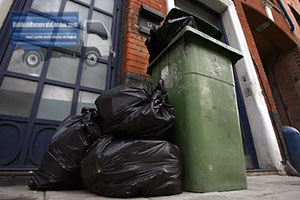by Joanna Burns November 7, 2014
- Around 1000 BC people first realised the necessity and importance of effective rubbish removal and waste collection as human settlements grew larger and more populous.
- Around 400 BC Athens, Greece established the first ever garbage dump available for public use.
- Around 200 AC, Rome had a specially organised rubbish collection force, made up of two men teams which went around the streets collecting garbage then tossing it in a special high-walled, covered wagon.
- In 1388, the English Parliament passed a law and outlawed the dumping of all waste in ditches and public waterways.
- In 1657, the settlement of New Amsterdam (now Manhattan, NYC) passes a law against tossing rubbish in the street, no organised rubbish collection system was in place at the time though.
- In 1690, Rittenhouse Mill was the first ever paper recycling plant in America, the facility made paper recycled cotton, linen and used paper obtained through rubbish removal from the public.
 In 1710, pioneers and colonists in Virginia, began burying their waste in pits, when the pit was full, they colonists covered it with solid waste like animal bones, crockery, glass etc. as well as suits of armour sent over from England and Europe.
In 1710, pioneers and colonists in Virginia, began burying their waste in pits, when the pit was full, they colonists covered it with solid waste like animal bones, crockery, glass etc. as well as suits of armour sent over from England and Europe.- It could be said, that the first ever metal recycling exercise in America took place in 1776, when a group of patriots in NYC, melted down a statue of King George III in order to make bullets for the independence struggle.
- In 1792, rubbish removal in Philadelphia was under management of Benjamin Franklin, he used slaves to transport waste away from the city.
- In 1800, a number of US cities used pigs and ran them through city streets, although the pigs did eat much of the garbage they left behind some serious bio waste of their own – it was a matter of time before this rubbish collection practice was abolished.
- In 1800, people who visited NYC for the first time, described the place as a ‘nasal disaster’. The overall opinion was that city streets smelled like ‘bad eggs dissolved in ammonia’.
- In 1810, the first ever rubbish bin was patented in London – proper rubbish collection was beginning to take shape.
- In 1834, West Virginia made rubbish removal ecofriendly and sustainable – vultures were protected from hunters as the birds ate up a decent portion of a city’s garbage.
- In 1860, most North American newspapers were printed on recycled paper i.e. wood pulps, not recycled rags – rubbish collection and recycling concepts were setting on.
- In the same year 1860, residents of Washington DC dump waste in streets and alleys, this leads to an ecological catastrophe full of roaming hogs, rat infestations and disease spreading. Rats actually infested the White House too.
- Six years later, in 1866, NYC council banned the disposal of any kind of waste in streets and alleys, however a properly organised rubbish collection service was not put in place.
- In 1872, NYC officially stops dumping of garbage from a platform over the East River.
- In 1874, Nottingham in England introduced proper rubbish collection system, as well as organised incineration of collected waste.


 In 1710, pioneers and colonists in Virginia, began burying their waste in pits, when the pit was full, they colonists covered it with solid waste like animal bones, crockery, glass etc. as well as suits of armour sent over from England and Europe.
In 1710, pioneers and colonists in Virginia, began burying their waste in pits, when the pit was full, they colonists covered it with solid waste like animal bones, crockery, glass etc. as well as suits of armour sent over from England and Europe.